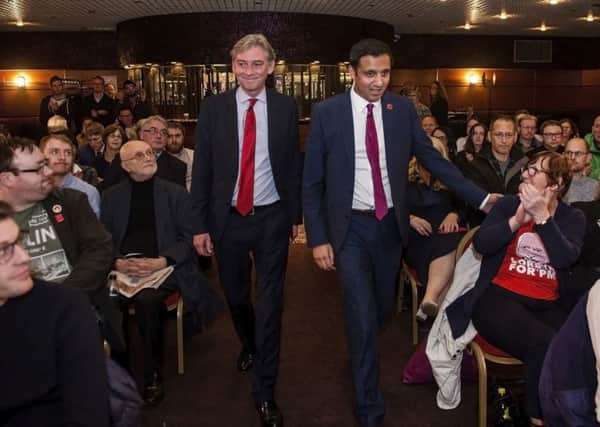Ian Swanson: Scottish Labour leadership vote exposes potentially damaging ideological split


But the contest between trade unionist Richard Leonard and former deputy leader Anas Sarwar has been an acrimonious one and there are fears the battle will leave lasting divisions, whoever wins.
Insiders say the general leftward shift of the party, symbolised by Jeremy Corbyn’s leadership, makes Mr Leonard the favourite, though it could still be a close finish.
Advertisement
Hide AdAdvertisement
Hide AdBoth men have only been MSPs since last year’s Scottish Parliament elections, but both have a longer history in the party.
Mr Sarwar was elected Labour MP for Glasgow Central in 2010, taking over the seat from his father, and was elected deputy leader of Scottish Labour in 2011 when the top job was won by Johann Lamont.
He stepped down when she did in 2014, making way for Jim Murphy and Kezia Dugdale. After losing his seat in the SNP surge at the 2015 general election, he was elected to Holyrood as a list MSP for Glasgow the following year.
Mr Leonard has not had such a high profile, but he has worked as an organiser for the GMB union and head of economics for the STUC.
Advertisement
Hide AdAdvertisement
Hide AdHe hoped to get elected to the Scottish parliament in 2011 in the previously safe Labour seat of Carrick, Cumnock and Doon Valley, but was beaten by the SNP. He became a Central Scotland list MSP in last year’s Holyrood elections.
Mr Leonard has secured the backing of the majority of constituency parties across the country and also in the Capital. Edinburgh Central voted 36 to 13 to nominate him rather than Mr Sarwar; in Edinburgh Northern & Leith, the margin was 36 to six; in Edinburgh Eastern 28 to six; Edinburgh Southern 25 to 20; and Edinburgh Western 14 to three.
The figures give an indication of opinion among members, but it is not constituency parties which will decide. Those who can vote in this election are party members, affiliated union members and registered supporters who signed up before October 9.
Sarwar supporters have complained about the Unite union encouraging members to sign up to vote via a mass text message, though Unite insists it has broken no rules.
Advertisement
Hide AdAdvertisement
Hide AdAnd Leonard supporters have drawn attention to large numbers of new recruits who appear to share the same phone number.
There are clear differences between the two candidates. Mr Sarwar insists the UK should remain in the single market, argues for targeted child tax credit and is quick to point out Labour won very few extra votes in Scotland at the general election.
Mr Leonard believes in universal benefits, voted in favour of triggering Article 50 and says Labour could have done better in Scotland if it had recognised the popularity of Mr Corbyn and the party manifesto.
Mr Sarwar signed an open letter last year calling for Mr Corbyn to resign but now insists he would campaign for him to become Prime Minister.
Advertisement
Hide AdAdvertisement
Hide AdAt the same time, Sarwar supporters suggest that if Mr Leonard wins, the Scottish party will again become a “branch office” – as Ms Lamont called it when she quit in 2014.
It has not been an inspiring contest, but whoever wins will have to work hard to rebuild relations in a party that cannot afford divisions.